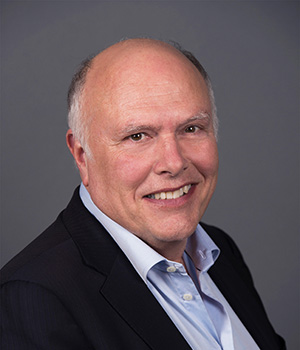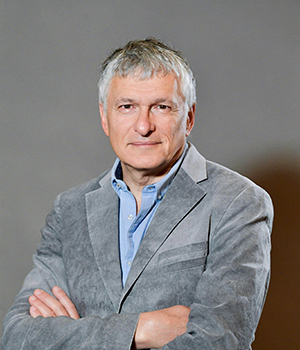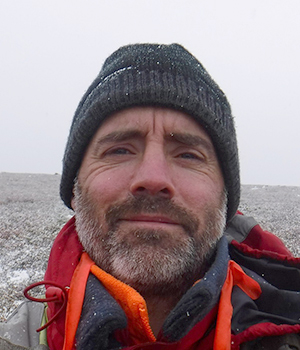Present in Quebec’s mining ecosystem for over 150 years, copper is currently extracted only as a by-product in three operating mines. However, the favourable market context is driving a revival of exploration across the province, paving the way for an optimistic future for this strategic metal. This session will provide an overview of promising exploration projects from across Quebec, as well as an insight into the innovative exploration approaches and technologies being put forward by the industry.
Copper in Quebec: Perspectives and Exploration Projects
Wednesday, November 19, 2025
Room 301AB – INMQ



1:30 p.m.
Geology and Copper Potential of the Mines Gaspé Project, Murdochville, Gaspésie

Osisko Metals
Over a period of 60 years, the Matagami mining camp produced zinc and copper ore almost continuously. The zinc concentrate was transported by rail to the CEZinc refinery in Valleyfield, while the copper concentrate was shipped by road to the Horne smelter in Rouyn, before final refining at the CCR in Montreal. This value chain illustrates how Matagami ore generated economic spinoffs throughout Quebec, supporting thousands of direct and indirect jobs. Added to this industrial dimension is a human legacy: the training of experts, from exploration to restoration projects, not to mention the many researchers who learned from Matagami and are now passing on their knowledge.
Today, Nuvau Minerals is opening a new chapter for Matagami. Thanks to the infrastructure already in place, the development of the Caber Complex and the expansion of the McLeod and Persévérance mines can be carried out at reduced costs and accelerated timelines, offering a considerable competitive advantage. The same logic applies to other deposits in the region: maintaining a concentrator in northern Abitibi can make the difference between a deposit and a mining operation. Nuvau Minerals embodies the vision of Matagami 2.0: a renewed, forward-looking mining camp that builds on a unique heritage to usher in a new era of mining prosperity and innovation.
2:10 p.m.
The Lac Gayot Project - New Insights on Ni-Cu-PGE Mineralization Within the Venus Greenstone Belt

Perseverance Metals
The Lac Gayot Project is an exploration stage project in the Nunavik region of Québec, primarily for Ni-Cu-Co-PGE mineralization. The project encompasses the majority of the ~2.88 Ga Venus Greenstone Belt, a ~20 km long sequence of komatiitic intrusive and volcanic rocks within a sequence dominated by felsic volcanics & volcaniclastics, basinal sediments and iron formations with lesser mafic volcanics. The ultramafic stratigraphy can be broken into three main stratigraphic zones in ascending order:
- Footwall sequence where intrusions cut the footwall granitoids and paragneisses;
- Lower komatiite sequence consisting of subvolcanic dykes and sills intruding dominantly felsic and sedimentary host rocks;
- Upper komatiite sequence where extensive komatiitic volcanics are extruded with coeval sulphide dominant exhalative horizons and iron formations.
Nickel sulphide mineralization is found across all three sequences within the Venus Greenstone Belt (VGB). The belt has widely distributed surface and sub-surface high grade (>3%) Ni-Cu-PGE mineralization. Originally discovered by Virginia Gold mines in 1998, the Gayot project was optioned by BHP, Breakwater Resources and KGHM international (up until 2012). In 2025, Perseverance Metals completed the first drilling program on the project since 2012, largely focussed on the upper komatiite sequence and new areas of mineralization identified by prospecting in 2024 and 2025.
2:30 p.m.
Break
2:45 p.m.
Au ± Cu ± Ag ± Mo magmatic-hydrothermal systems (and other related substances) in Eeyou Istchee Baie-James: where and when to look!

Magmatic-hydrothermal mineralized systems are set up in several geodynamic contexts and host numerous gold ± copper deposits in the Superior Archean Province. In addition to these two substances, these deposits may contain significant amounts of silver, molybdenum, as well as other related substances. A good understanding and definition of the spatio-temporal framework of the formation of these deposits are important to increase the chances of discovering new mineralized systems that may potentially form during the same metallogenic periods as the already known systems.
This conference will provide a general overview of the known mineralizations associated with magmatic-hydrothermal systems related to Au ± Cu ± Ag ± Mo in the Eeyou Istchee Baie-James territory, the various metallogenic eras associated with their formation, as well as the potential of lithologies synchronous with the host lithologies of these mineralized systems. Currently, 50% of the past production and combined copper resources of Eeyou Istchee Baie-James come from a small neoarchean Au ± Cu ± Ag porphyry intrusion, namely the Troilus mine diorite (1050 Mlbs Cu). Many intrusions, contained within several metallogenic eras of this territory, are largely underexplored. The potential for mineralization remains high for the discovery of new deposits containing many associated substances, including several critical and strategic metals and minerals, other than copper.
3:05 p.m.
The Rex Corridor in Nunavik: A Giant Target for Copper and Other CSMs

The Rex Corridor is defined by a giant linear geochemical signature for copper associated with rare earth elements (REE) in lake-bottom sediment (LBS) surveys.
This copper-REE target, which extends over 330 km by 30 to 50 km, is the largest and most intense in Québec. Azimut's systematic exploration campaigns since 2010 have largely validated the polymetallic potential associated with this anomaly. Many areas of interest remain to be explored.
The work carried out includes 6,200 LBS samples taken during detailed surveys, 34,000 km of airborne geophysics (magnetic, electromagnetic, radiometric), 10,400 prospecting samples and 99 drill holes (core and reverse circulation) totalling 9,960 m.
More than 150 showings mineralized mainly in copper, sometimes over a kilometre or more in scale, have been discovered, with a geology and metallic assemblages that can be associated with the following types of deposit:
- Iron Oxide Copper (Gold) with copper-molybdenum-cobalt. Five brecciated zones with magnetite and/or hematite, controlled by major brittle faults, are distributed along the corridor over a length of 100 km and a width of 30 km.
- Greisen-skarn at the edge of a 15 km by 5 km fluorite-topaz granitoid intrusion containing polymetallic copper-gold-silver-tungsten-tin-bismuth-molybdenum-telluride mineralization.
- Gold-copper-tungsten-silver associated with shear zones in a volcano-sedimentary context including iron formations.
The mineralizations identified are proximal to giant LBS geochemical signatures. The Rex Corridor appears to be spatially correlated with the Allemand-Tasiat crustal lineament in the Archaean Minto Subprovince of the Superior Geological Province.
3:25 p.m.
The Nachicapau Cu-Au-Ag Project, Labrador Trough, Québec

Exploration Midland
The Nachicapau Cu-Au-Ag project is located in the north-central part of the Labrador Trough in Québec and is part of an exploration alliance between Midland Exploration and SOQUEM. The project began in 2022 with the discovery of several Cu-Au-Ag showings. The main showing returned 1.49% Cu, 0.54 g/t Au and 11.41 g/t Ag over 4.0 m in channel samples. Numerous other showings and boulders with Cu-Au-Ag mineralization have since been discovered over more than 4 km.
Mineralization consists of shear zones with disseminated digenite, as well as calcite-digenite tension veins. Early zones exhibiting strong sterile sodic and calc-silicate alteration are crosscut by carbonate-orthose-sulphides-hematite-magnetite-barytine alteration. Mineralization is mainly hosted in mafic to ultramafic tuffs, but dykes and syenitic alkaline intrusions (Lac Nachicapau Intrusions) are also mineralized and altered. These intrusions are dated at 1813 Ma, indicating syntectonic emplacement. Petrographic studies, field relationships and the fact that these late intrusions are mineralized suggest that the mineralization was emplaced after the metamorphic peak of the upper greenschist facies, but before the end of regional deformation. The mineralizing fluids were oxidizing, depleted in silica and relatively low in sulphur. The mode of emplacement adopted for these mineralizations is the IOCG model. These mineralizations can be linked to the Cu-Au-U showings at the Lake Romanet horst, further south, and to other copper showings discovered by Midland-SOQUEM since 2023.
3:45 p.m.
